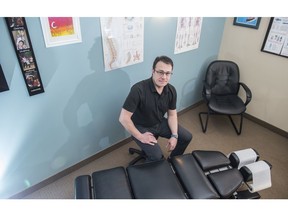Increasing demand and rising health costs warrant investment in massage therapy


Increasing demands on the health system and the rising cost of healthcare warrant a closer look at the current and potential role that qualified remedial massage therapists and myotherapists play in improving and maintaining quality of life, health and wellbeing.
This was the message of Massage & Myotherapy Australia’s 2024/2025 Federal Budget Submission titled ‘Opportunities to improve efficiency and efficacy in therapeutic care.’
Ann Davey, CEO Massage & Myotherapy Australia said, ‘Significant change in the professional development of massage therapists (remedial massage therapists and myotherapists) has occurred during the past 15 years. In parallel, the integration of qualified professional massage therapists into primary health care has also occurred.
Mrs Davey said, ‘This increased participation in the primary healthcare system by qualified massage therapists has occurred largely through referrals from General Practitioners (GPs) and Allied Health professionals, and healthcare insurance for those who can afford it.’
Mrs Davey said, ‘Unfortunately for many lower income earners, massage therapies are not universally affordable and available to people who could benefit from massage in maintaining their quality of life, health and wellbeing’.
‘This is significant given that rising obesity, cardiovascular and chronic musculoskeletal disease, and the prevalence of chronic pain and associated mental health issues are often associated with low incomes.
The Association’s 2023 Practitioners’ Survey of its 8600 members indicates that integration of massage into the health system involves various health, occupational health and safety, and motor accident insurance schemes; as well as the inclusion of qualified massage therapists in GP Health Plans, and a growing number of referrals to professional massage therapists from Registered Health Practitioners such as GPs and Allied Health professionals.
The 2023 Practitioners Survey also indicated that the aging population, changes to the availability of opioid pain medications and the focus on women’s health are also reasons massage therapists are called upon when relief and maintenance, rather than medical cures, are the only or most appropriate response.
Mrs Davey sad that unfortunately, massage therapies funded through Medicare are predominantly administered by Registered Health Practitioners and are incorporated as a minor adjunct therapy alongside other Allied Health therapies, with questionable benefit.’
However, the cost of a massage therapy administered by a professional massage therapist is less than the cost of an allied health practitioner. Consequently, if massage is administered under the current Medicare funding arrangements it is unnecessarily more expensive, not as effective or beneficial with little or no data collection regarding the use of massage in Medicare, and an unnecessary burden on time-constrained Registered Health Practitioners.
This is evidenced in the Medicare Benefits Schedule – Item 10960 for physiotherapy where a fee of $64.20 with a benefit of 85% or equal to $58.30, is provided but only requiring a minimum of 20 minutes for a combined physiotherapy and massage treatment. In this regard massage therapies may be delivered for as little as 10 minutes, as a pleasant adjunct to the consultation and other allied health therapies.
Mrs Davey said, ‘Including lower cost professional massage therapists where appropriate would ensure the best use of Medicare funding available, and enable standalone massage therapy treatments to be delivered for the required time of up to 60 minutes to achieve the best outcome for patients.’
The data shows that engaging massage therapists to administer these therapies in place of more costly registered health practitioners such as physiotherapists and nurses, will deliver similar or better outcomes for patients.
The improved outcomes that can be derived are due to the specific qualifications and training in hands-on soft tissue manipulation because soft tissue manipulation is not included in physiotherapy or nursing diplomas or degrees. This compares poorly to the 1000 hours of supervised hands-on clinical training that massage therapists undertake to acquire a Diploma or Advanced Diploma in Remedial Massage Therapy or Myotherapy respectively.
Mrs Davey said, ‘Working examples where massage therapists are part of an integrated choice of care options are injury rehabilitation and in areas of aged care and disability.
‘The National Disability Insurance Scheme (NDIS) and the Aged Care Package for example, underscore the veracity of these arguments as working models that could be employed within an expanded Federal funding framework that includes professional massage therapists.
‘The significant growing body of evidence attesting to the efficacy of massage therapy on the health and well-being of patients when administered by a qualified professional massage therapist, also provide substantive argument for change.’
In pursuit of the National Health Reforms Agreement (NHRA), the evidence indicates that furthering the integration of professional massage therapists into the public health system through managed initiatives, will have long-term positive effects on health workforce productivity and the health and well-being of the community generally.
To achieve the best outcomes for patients, the Association’s recommendations included supporting a national Advanced Diploma of Myotherapy Qualification as part of the Australian Qualifications Framework (AQF) including incentives for professional qualified massage therapists to further their education, and Federal funding to further integrate professional massage therapists with recognised qualifications in the Myotherapy Advanced Diploma or Degree.
‘Such investment in Australia’s health future and human capital has significant potential to deliver benefits in more patient-centred care, free up time burdened Registered Health Practitioners and broaden the choice of responses available to those suffering from chronic conditions, pain and stress,’ Mrs Davey said.
END
About us:
Massage & Myotherapy Australia is a not-for-profit organisation formed in 2003 and is the leading representative body for professional massage therapists nationwide, with a membership of over 8,500 therapists.
Contact details:
Glenn Schaube 0439 320 151; glenns@grscom.com.au
link






